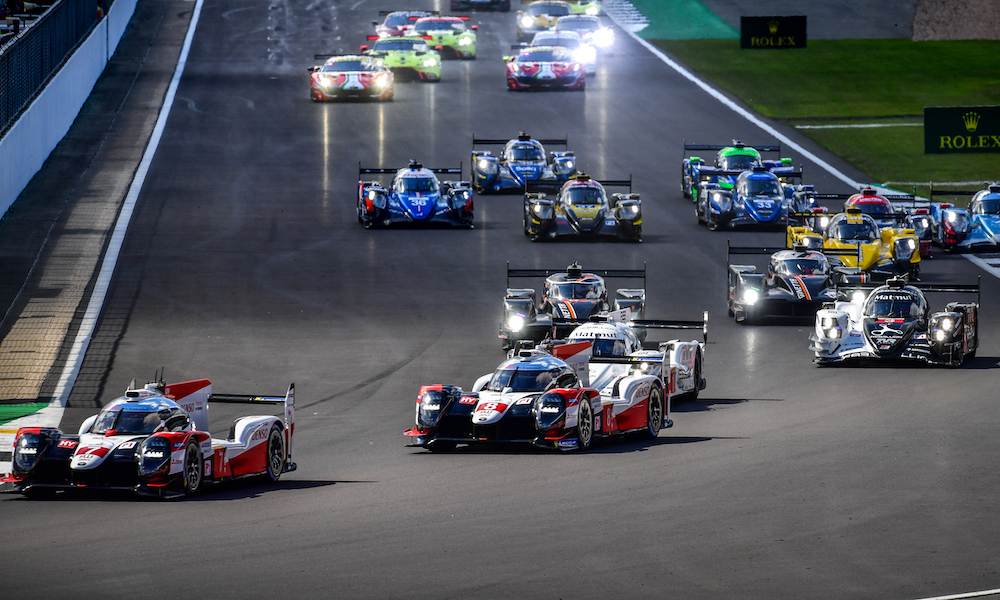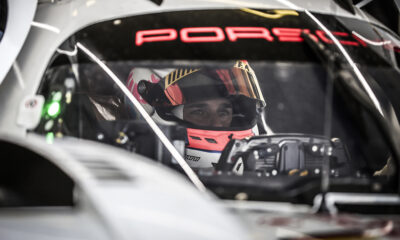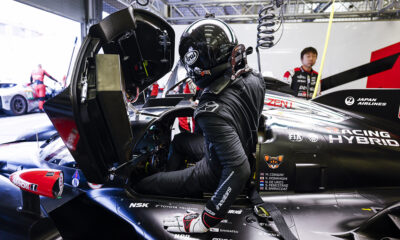
Photo: MPS Agency
The first round of success handicaps for the FIA World Endurance Championship LMP1 category has been detailed ahead of the second race of the season at Fuji Speedway.
The No. 7 Toyota TS050 Hybrid which Mike Conway, Jose Maria Lopez and Kamui Kobayashi steered to victory in the 4 Hours of Silverstone season-opener will be made 1.4 seconds slower per lap at the next race.
Changes to several parameters have been made. These include reducing the amount of hybrid power the car can expend over the course of a lap, and the rate at which it can burn fuel.
It will retain its 932 kg minimum weight limit that was imposed by the series just before the Silverstone weekend, as will its sister No. 8 car which finished second last time out.
The Toyota driven by Sebastien Buemi, Brendon Hartley and Kazuki Nakajima will be made 1 second slower per lap at Fuji, with around 9.5 percent more hybrid energy available to it compared to its sister car.
Team LNT’s No. 5 Ginetta G60-LT-P1 AER finished fourth overall at Silverstone and will therefore be made 0.66 seconds slower per lap.
It has received the third-largest success handicap for Fuji because the No. 3 Rebellion R13 Gibson, which scored a podium last time out, is not competing in Japan.
The changes to the No. 5 Ginetta include a 34 kg weight increase from 833 kg to 867 kg.
Rebellion Racing’s No. 1 car, which finished tenth overall and fourth-best out of the points-scoring LMP1s, will be 0.03 seconds slower per lap, while the No. 6 Ginetta which finished behind it will not be slowed, in accordance with it being the reference car for the other cars’ handicaps.
The success handicap system was introduced this season as a way of balancing the top prototype field in the wake of Toyota’s dominant 2018-19 title run.
It operates on a formula based on a coefficient factor of 0.008, which when multiplied by the length of the circuit and the points difference to the last-placed LMP1 car generates a handicap of seconds per lap.
The points differences in the Fuji update appear to reflect the finishing positions of each car in the overall Silverstone order, rather than the LMP1 order alone.
This explains why the top three handicapped cars – the only ones to finish ahead of the Silverstone LMP2 winner – have been given such large handicaps compared to the No. 1 Rebellion and the No. 6 Ginetta which finished 10th and 28th respectively.
GTE-Am Success Ballast Numbers Confirmed
Minimum weights for the GTE-Am cars, which now run under the conventional system of success ballast, has also been confirmed by the FIA Endurance Committee, which sees the entire class reduced by 20 kg and ballast added from there.
The Silverstone class-winning No. 83 AF Corse Ferrari of Emmanuel Collard, Francois Perrodo and Niklas Nielsen has earned 30 kg of ballast, 15 kg for winning the race and 15 kg for currently leading the championship.
The same distribution has been made to the second and third place class finishers in the season-opener, with the No. 98 Aston Martin Vantage GTE and No. 70 MR Racing Ferrari 488 GTE set to run with 20 kg and 10 kg of ballast in Fuji, respectively.
John Dagys contributed to this report























